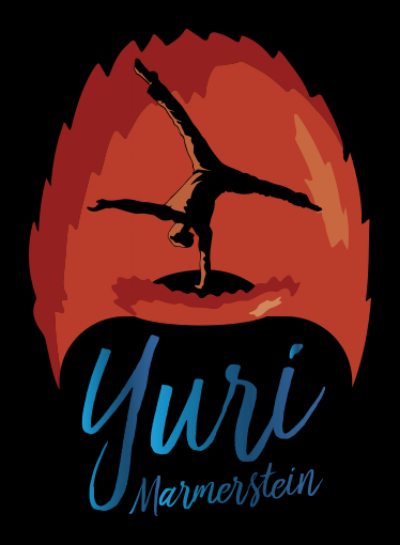Handstands: To Grip or Not To Grip
When performing a handstand, your hands are what engage and connect with the floor. The way you utilize the hands will have an important impact on your handstand and overall balance.
In today's scenario we will be discussing two potential options: engaged grip and flat hands. What purpose do they have, and which is the better choice for certain situations?
Gripping in a handstand involves pressing the fingertips into the floor and pulling them in so that there is tension in the hand and forearm. Typically, the middle joint of the fingers comes up off the floor when performing this, but the hand position may not look the same for everyone. Check out my "PRIMING THE HANDS" video for a more detailed explanation.
Flat hands are as the name suggests; relaxed hands with minimal tension/engagement. This is going to be the default setting, as gripping is something that takes conscious effort from the flat hands position.
The grip can be very helpful when practicing balance on the hands. This is because it creates a stronger connection with the floor, which allows for more leverage and speed when making balance corrections. That doesn't mean you should use it all the time though. Plus it has one main disadvantage: gripping takes energy and can make you tire out faster. There are also some situations where it is either unnecessary or counterproductive.
Here are some situations to consider when it comes to gripping the floor:
-Beginner
As a beginner, the focus should be strength, conditioning, and coordination for getting upside down and on your hands. Gripping the floor is something you can play with in your warmup for exposure, but it doesn't need to be a major part of your practice just yet.
-Wall Handstands
Grip is not necessary or helpful for wall handstands when there is no balance involved. If you are doing this exercise for alignment, inversion awareness, or endurance/conditioning, there is no reason to grip the floor. When I perform wall handstands for warmup or conditioning, I keep my hands relaxed to save energy.
-Wall Balance
This is where gripping the floor will be very advantageous, especially if you are just learning how to balance. The balance itself comes mostly from wrist flexion/extension, but the grip makes it much easier to feel and execute. Depending on your level you can grip throughout the whole set, or turn on the grip during the moments you get into freestanding balance and relax when you return to the wall.
-Freestanding Kickups
Here it depends on the intention of the drill. I like to practice precision kickups with flat hands to ensure my accuracy and consistency. The intent here is to consistently find the handstand position with minimal correction, but not necessarily to hold the handstand.
When my intent is to balance the handstand, I will grip throughout the whole kickup so I can make easy corrections at any time.
-Freestanding Handstand
In this situation it also depends on the situation, your skill, and your personal preference. The grip helps with balance but takes more energy to perform. If you are still learning, or balancing less than 30 seconds, I suggest to keep the grip and make your balance more consistent.
If you are balancing 30-60 seconds or longer, you have the option to relax the grip. That doesn't mean you should or you have to, but it means you can play with it. Try to grip less and see how it feels. There is a tradeoff: relaxed hands use less energy and don't tire out as fast, but your balance needs to be a lot more precise to pull it off.
I prefer this method now: minimal grip and only activate it when I need it. However it did take some time to transition and get used to it, as when I first learned I was used to gripping the floor quite hard.
-Blocks
This is an interesting apparatus because it allows the fingers to curl over the edge and connect with the block completely. It takes getting used to, but it allows for a more comfortable grip compared to floor. This also means you don't have to squeeze as hard as floor to still maintain good pressure through the fingers.
An interesting blocks exercise to try is to balance with the fingers lifted. This is much harder than a regular handstand because it forces you to balance on a smaller point with less available leverage for correction. It's not the way you should be practicing balance, but it makes for a fun challenge and increased awareness.
-Handstand Walks and Dynamic Work
I treat handstand walks and other dynamic work as a constant transition from one hand to the other. So there's never any true balance, but rather a constant state of controlled falling. I do not utilize the grip in this scenario because it's akin to using the gas and brake on your car at the same time. The balance doesn't come from the hands, and neither hand stays on the floor for very long, so there's no purpose in gripping. The only time I do is if I perform a specific drill where I intentionally switch from walking to static handstand. When I stop walking I activate my grip. Otherwise, the hands stay relaxed and roll through the floor during transitions.
Check out the video below for some visual explanations. What do you think? Was this helpful to develop a better understanding of the grip in your handstand?
